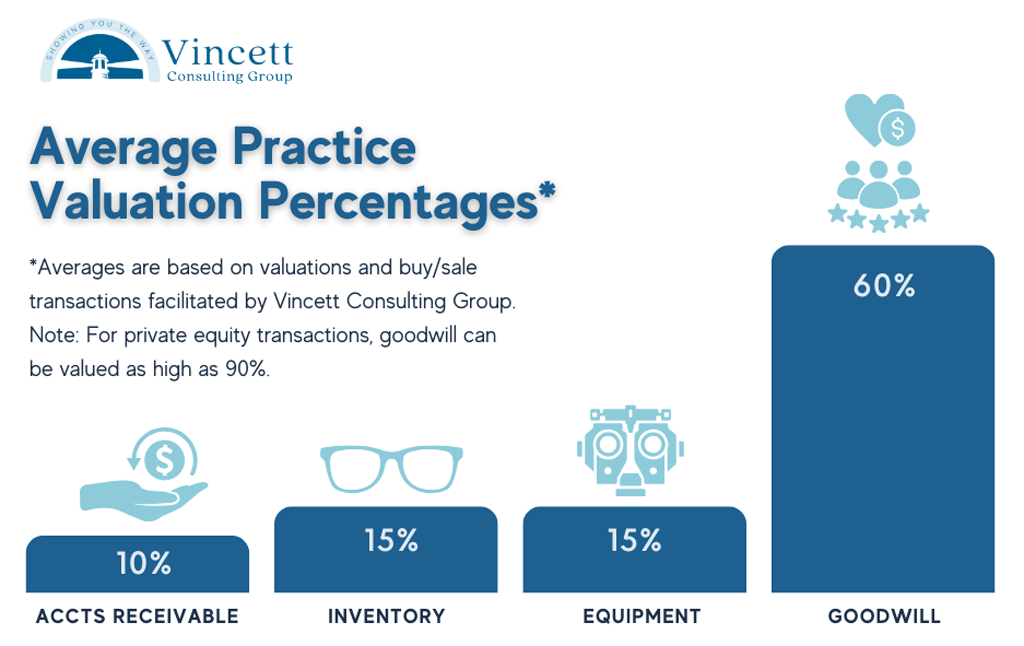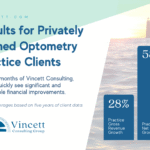Whether you plan to sell in two years or 20, understanding and protecting goodwill will ensure your practice commands its true worth.
by William K. Vincett, O.D.
When valuing a service business like an optometry practice, it comes down to one thing —cash flow. Buyers want to know if the practice can comfortably pay the owner a normal salary and still have extra cash left over. That “extra” is what makes it possible to cover the loan payments for the purchase.
After that’s figured out, the purchase price gets split up. Some of it goes toward things like equipment, inventory, and software. But here’s the part that really adds to the valuation — goodwill.
So what is goodwill? It’s the trust and confidence your patients place in you and your practice. And in many ways, it’s the most valuable part of the business. In nearly all the transactions I have been involved with, at least 50% of the total price is allocated toward goodwill. With private equity transactions, it can be as high as 90%.
The catch is that goodwill doesn’t transfer instantly. Because the time between most patient exams is 12 – 48 months, it often takes years, not months, for patients to fully feel comfortable with a new doctor. That’s why banks that finance practice purchases usually require the seller to stay on for a smooth transition—ideally two years or more—to reassure patients that the practice they trust is still in good hands.
So yes, cash flow sets the price, but when it comes to financing and long-term success, it’s goodwill that makes the whole transfer work.
At the end of the day, a healthy practice transfer is only possible because of goodwill.

What is goodwill?
Goodwill represents the intangible assets that make a practice profitable and sustainable beyond its physical infrastructure. In optometry, goodwill typically includes:
- Patient Loyalty and Retention – recurring exams, consistent eyewear purchases, and long-term relationships.
- Reputation and Brand Equity – the trust a practice has built in the community over time.
- Referral Networks – connections with primary care physicians, specialists, and satisfied patients who spread the word.
- Location-Based Value – accessibility, visibility, and established presence in the market.
- Team and Culture – staff relationships with patients and the efficiency of practice operations.
Goodwill commands a higher sale price.
From a buyer’s perspective, goodwill is a predictor of future revenue. A practice with strong goodwill can command a higher price because it demonstrates stability and lower risk.
- Revenue Continuity – Buyers want to know that patients will stay after the transition. Strong goodwill reduces patient attrition.
- Competitive Advantage – Reputation and loyalty protect the practice from competitors.
- Scalability – Goodwill creates a foundation for sustainable growth, especially if the new owner wants to expand.
Building and protecting goodwill.
Goodwill should be intentionally and actively nurtured. Steps to strengthen goodwill include:
- Investing in Patient Experience – from modern communication tools to personalized care.
- Managing Online Reputation — encouraging and responding to patient reviews.
- Maintaining Community Visibility – sponsorships, events, and consistent branding.
- Documenting Processes – ensuring smooth transitions and staff consistency.
- Measuring Patient Retention – tracking data to prove goodwill strength during valuation.
Key takeaway
For optometry practice owners, goodwill isn’t just a line item on a valuation report — it’s the heartbeat of your practice that can drive up to 90% of your valuation. Whether you plan to sell in two years or 20, understanding and protecting goodwill will ensure your practice commands its true worth.
Do you want to know what your practice’s current market value is, or how to improve its value to buyers?
Rely on the expert and trusted experience of Vincett Consulting Group. Contact us today.






